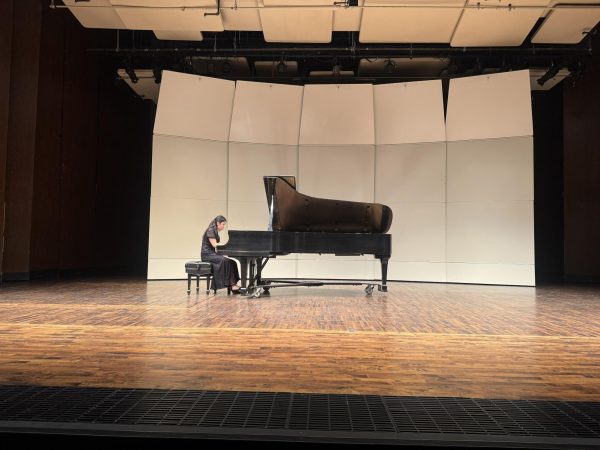World Without Ice and the Poem of Time
In Varner Hall’s Lab Theatre, “World Without Ice” art installation was open for public viewing from Sept. 5 through Sept. 9 between 10 am and 8 pm. It was a collaboration between musicians, composers and artists Michael Could, Stephen Rush, Marion Tränkle and climate scientist Henry Pollack, aiming to capture the audience’s interest and reaction.
In promotion of the event, the College of Arts and Sciences’ website read, “Part science, part music, part art, this collaboration is a groundbreaking, thought-provoking and compelling multisensory experience focusing on Earth’s changing climate… It captures a precarious moment in the history of our planet” and “is derived from a century of climate data.”
Walking in the room that was hosting the installation, spectators were greeted by darkness and silence. It took a moment for my eyes to adjust to the pitch-black of the room before I found a seat. Some of the seats were situated in front of large drums.
Above the drums hung platters of ice blocks. The ice was melting. It dripped on the differently tuned drums. Pitter… patter… pitter… patter… It took its time, slow but steady.
“Mysterious and very, very gradual,” said Gottfried Brieger, former Professor of Chemistry at Oakland University. The art installation brought upon him primeval feelings and a strong need to reach further into himself and create art, create a poem.
He spoke softly when he recited:
“The seed is water
Mother Earth frozen for ions
Sun warmed
The gigantic sheet splits
Uncovers the earth
In all its raw nakedness
The water of life is all around
To feed the growth of the giant infant.”
Brieger peacefully observed the “World Without Ice,” in the dark silence. He leaned against the seat in front of him.
The room was empty, it was late.
Behind the drums there was a large screen, which was black and blank at first. Eventually, a picture of ice appeared on the screen and the room became brighter. The ice was slowly melting in the picture. It was a movie of time that gradually revealed the earth, just like Brieger had mentioned in his poem.
“I think about a cosmic birth,” he said.
Droplets were still descending upon the drums. Pitter… patter… pitter… patter…
Brieger said he thought of the drums as ingenious; the music as somber and calming. “It’s the music of the water drops,” he said softly.
Although a chemistry professor, Brieger said that he chose to look at the installation in a non-scientific way. Those words were his first thoughts, he said.
According to Brieger, bringing a lively imagination to the installation was important.
“It’s not all spelled out for you… You have to watch the whole thing [for yourself],” Brieger said. Only then, would you be able to understand the pureness and the fascinating process of the earth’s climate change, through the artists’ eyes.




